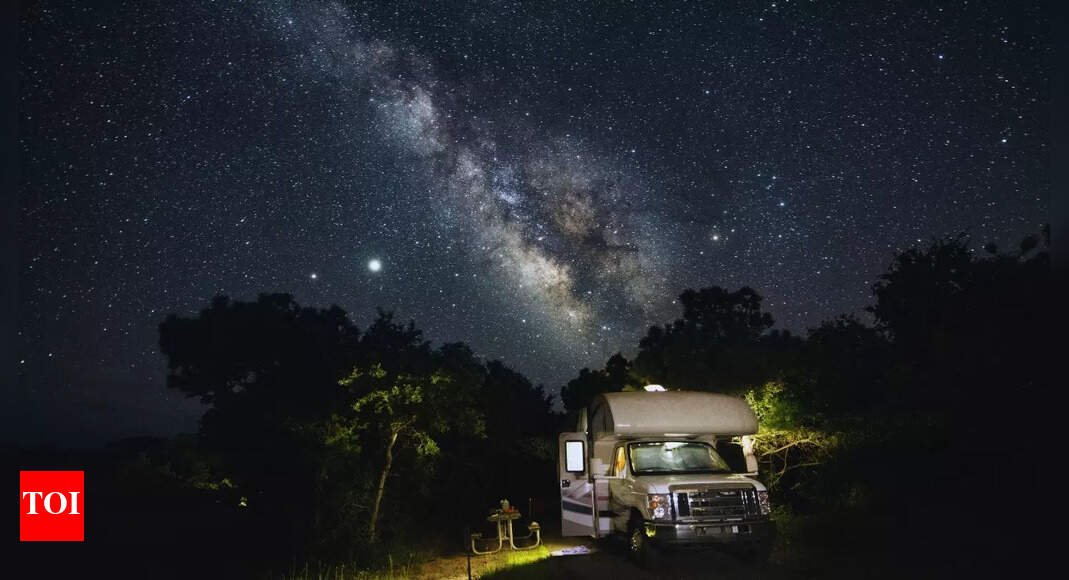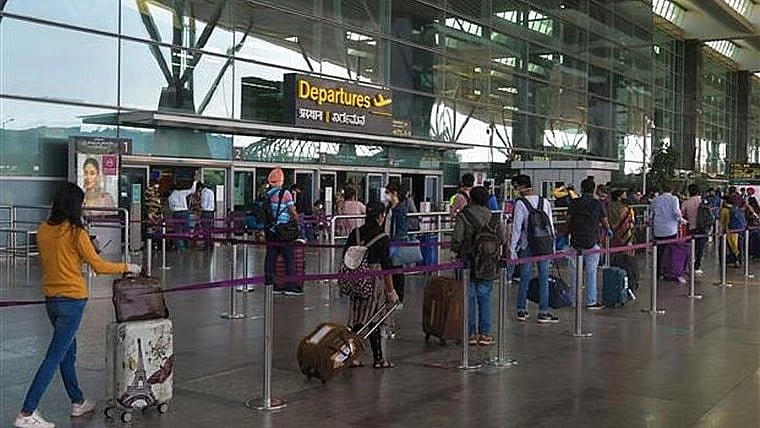Travel Guides & Articles
From Hills to Heritage: Shillong Emerges as India’s Top Trending Destination

Published on
August 22, 2025
Sharing skies with the rain and dotted with pine-clad hills, Shillong has almost playfully claimed the crown of India’s coolest travel story of 2025. Fresh numbers from Skyscanner, the travel engine folks, show that the city clocked an 828% jump in flight searches from January through June 2024, compared to the same stretch last year. Those figures quietly nudged the capital of Meghalaya ahead of Instagram-famed places like Thailand beaches and Kyoto cherry blossoms. The message is clear: the nation is quietly falling for the offbeat, for spaces where waterfalls, living root bridges, and a whiff of cool cloud-kisses outnumber selfie snaps of tourist traps.
The bump in Shillong’s travel buzz is part of a wider Indian shift: wanderers are trading heaving airports and ticking off must-sees for valleys that still hold hush and hills that still hold song. The city, nicknamed the “Scotland of the East” for its rolling charms and cool attitude, asks for a different kind of packing—an open heart, a rain jacket, and maybe a notebook for the stories that unfold over tea in roadside shacks. Here, the scenery is a warm, evergreen “hello,” the culture a generous, uncurated “come sit a while,” and that mix has turned Shillong into the girl-in-the-corner-at-the-party everyone is suddenly curious about.
Shillong’s rolling hills, gushing waterfalls, and mirror-flat lakes have recently begun captivating Indian travelers, many of whom are posting photos of its drifting mists and joyful street scenes. The city charms by marrying its startling landscapes to an equally vibrant cultural life. A single trip can reward visitors with sweeping views, intimate moments at annual music festivals, pop-up art shows, and guided walks through ancient Khasi villages.
A key reason Shillong continues to garner attention is how well it has held on to its original bounty. Unlike destinations dulled by too many souvenir stalls, Shillong lets people roam in gardens of green without the louder crowds that many Indian hill stations attract. This tranquil intimacy, together with the city’s cooler, pine-scented air, invites those in search of quieter, more eco-conscious escapes to linger a little longer.
Shillong’s Rhythm and Cafe Scene: An Evolving Magnet for Travelers
Over the past few years, Shillong’s music scene has steadily captured national attention. Frequently billed the ‘Rock Capital of India’, the city boasts a slate of homegrown fests and a surge of indie musicians. Visitors can now stroll between hillside cafés and dimly-lit bars, where live sets merge with the scent of wet earth and the glow of hanging lights. These venues serve fresh coffee, local dumplings, and a steady stream of bass lines, crafting a seamless blend of sound, art, and the sweeping landscape.
Travelers in search of a trip that balances nature, culture, and genuine human connection have begun to linger in Shillong. Young backpackers, poets, and emerging artists trade stories in the cafés, drawn by the city’s quiet beauty as much as by its loud, heartfelt songs. In the limestone valleys, the hills feel, for a moment, both a world apart and a homecoming.
In addition to its rich cultural fabric, Shillong is fast becoming a favored destination thanks to the government’s emphasis on eco-tourism and responsible travel. The region’s stunning landscapes are a natural invitation, and the Meghalaya administration has therefore set out to cultivate eco-conscious tourism. The Meghalaya State Tourism Development Corporation (MSTDC) has been at the forefront, working to guide tourism so that it nurtures the environment while honouring local heritage.
A defining feature of the sustainable push is the meaningful role of local communities. Shillong has embraced community-based tourism, allowing visitors not only to witness the Khasi way of life but to participate in it—whether through a village potter’s workshop, a guide telling folklore on a village trail, or a market selling tribal handicrafts. The pattern is clear: tourism revenue is funnelled back into the very folk cultures that create it.
To reinforce the eco-tourism vision, the Meghalaya government has rolled out a range of green initiatives. The establishment of eco-resorts treads lightly on the landscape, hand-carved nature trails wind through pristine forests, and responsible village tours reveal heritage while safeguarding it. The result is a travel experience that suits the global appetite for low-impact exploration and that still carries Shillong’s unique charm.
Meghalaya Tourism
The diverse rides that swing open to travelers to Shillong make it a pocket that suits every style under the sun. Elephant Falls tumbles like silver ribbons between mossy boulders; the mirror-smooth surface of Umiam Lake spreads like a teal hush; Ward’s Lake, framed with flower-filled paths, draws families for swan-shaped pedal boats. Nature lovers can layer their day with a drive to Shillong Peak, where the radiant spread of hills, the dawn light seeping between them, is like a long, gentle country sigh; the dawn waterfalls drench the valleys below, painting them with mist.
For those whose idea of a good time is measured in backpacks and stars over dinner, the region serves trekking trails that climb through thick green canopies where sun shafts spotlight wild orchids, and nights under canvas by the fire tell you the distance between you and the city. Trails can lead you to the bordering embrace of Kaziranga’s rhinos or to the silence of the Nanda Devi Sanctuary, where the only trails are animal paths and the only echoes are your own soft steps.
Reaching Shillong is a breeze: the city holds a hand out to travelers arriving on a regular flutter of flights from Guwahati and Kolkata, and the winding roads that follow are towns, tea stalls, and postcard hills. The Meghalaya State Transport Corporation’s buses are a choir of sturdy seats and open windows, marking time with the songs of night insects and the occasional cheer of distant waterfalls, the fare light on the purse and heavy on the memories.
Conclusion: Shillong’s Future as a Tourism Hub
By 2025 Shillong has clearly risen to become a must-visit travel destination, blending compelling scenery, vibrant local culture, and a steady commitment to sustainable tourism. This growing popularity among domestic and international travelers speaks to the city’s appeal across a broad audience. Strategically positioned as a gateway to Northeast India, Shillong can now advance into a premier hub. Underpinning this positive trajectory are government policies centred on eco-tourism and involving local communities at every level. This dual focus guarantees that the city’s tourism expansion will create lasting advantages for visitors while simultaneously uplifting residents and preserving the region’s fragile environment.
Travel Guides & Articles
Beyond wildlife: India’s best nature trips to plan before 2025 ends |

The wildlife season is just around the corner, and we are excited about that. But this time, we are not here for that. For nature lovers, India’s diverse landscapes do not disappoint. Here we are looking at experiences beyond wildlife safaris, from lush valleys to serene backwaters. The winter months will provide perfect weather for exploring the outdoors. Here are eight exceptional nature trips across India to plan before the year ends.
Mawlynnong, Meghalaya
From Shillong Airport, Mawlynnong is located just 90 km. Also known as Asia’s cleanest village, Mawlynnong’s forests, waterfalls, and living root bridges are some of the best things you will experience in Northeast India. Not to forget, winter is the time when Dawki River (located just 30 km from Mawlynnong) is at it’s best form. Crystal clear water of Dawki River will leave you mesmerised. When in Mawlynnong, stay in village guesthouses. They are budget-friendly, and will let you have authentic traditional stay experience.
Dandeli, Karnataka
Located just 125 km from Goa Airport, Dandeli is nestled in the Western Ghats’ foothills. Its dense forests and Kali River offer adventure and serenity. Its flat terrain and riverine landscape are photogenic, perfect for the ‘gram.’ If you can, take out time to go rafting on the Kali River, or trek to Kavala Caves.Bhitarkanika National Park, OdishaLocated just 150 km from Bhubaneswar Airport, this mangrove ecosystem and wetland, spans 672 sq km. It offers serene boat rides through creeks and sightings of crocodiles and migratory birds. Bhitarkanika is a beautiful mix of wildlife and offbeat travel. Cruise through mangroves, spot estuarine crocodiles, or visit the Olive Ridley turtle nesting site at Gahirmatha.Gokarna, KarnatakaGokarna is located approximately 150 km from Goa Airport. It’s a quieter alternative to Goa. Gokarna’s pristine beaches and coastal cliffs offer a laid-back nature escape, far from the hustle and bustle of an over-crowded (and expensive) tourist trap. Here’s what to do in Gokarna: Relax on Om Beach, trek to Kudle Beach, or visit Half Moon Beach for solitude. The Mahabaleshwar Temple is a beautiful addition to your serene coastal holiday.
Travel Guides & Articles
Top 6 Places To Spot Black Panthers In India – Travel and Leisure Asia

Top 6 Places To Spot Black Panthers In India Travel and Leisure Asia
Source link
Travel Guides & Articles
Travel Drops 8% In June 2025

New Delhi: For the first time since 2001, excluding the Covid-19 years, the number of Indians visiting the United States has fallen as 2.1 lakh Indians travelled there in June 2025, which is an 8 per cent drop compared to 2.3 lakh in the same month last year, according to the US Commerce Department’s National Travel and Tourism Office (NTTO).
The downward trend seems to be continuing in July as well, with provisional data showing a 5.5 per cent decline compared to July 2024.
This slowdown is part of a broader global trend. NTTO data shows that overall international arrivals to the US also fell, with a 6.2 per cent drop in June, 7 per cent in May, 8 per cent in March, and 1.9 per cent in February.
Only January and April saw increases of 4.7 per cent and 1.3 per cent, respectively.
India continues to be the fourth largest source of international visitors to the US. Since Canada and Mexico share land borders with America, India ranks as the second largest overseas market after the UK, followed by Brazil in fifth place.
Together, these five countries contributed nearly 60 per cent of all international arrivals to the US in June.
Traditionally, Indian travellers to the US include students, business professionals, and those visiting friends and relatives.
Leisure travel to America has always been less popular compared to destinations like Southeast Asia, the Middle East, and Europe.
The current slowdown is being seen most clearly among students, though experts believe that business and family visits could also be affected if visa delays and constraints continue.
The Indian diaspora in the US is strong, with over 50 lakh people, which has generally ensured a steady flow of travel.
In fact, NTTO data shows that every June since 2001 had recorded higher numbers than the year before — until now.
April this year had been a positive month for Indian travellers overall, with 29 lakh people flying abroad.
The UAE was the top destination, followed by Saudi Arabia, Thailand, Singapore, and the US.
(Except for the headline, this article has not been edited by FPJ’s editorial team and is auto-generated from an agency feed.)
-
Tools & Platforms3 weeks ago
Building Trust in Military AI Starts with Opening the Black Box – War on the Rocks
-

 Business2 days ago
Business2 days agoThe Guardian view on Trump and the Fed: independence is no substitute for accountability | Editorial
-

 Ethics & Policy1 month ago
Ethics & Policy1 month agoSDAIA Supports Saudi Arabia’s Leadership in Shaping Global AI Ethics, Policy, and Research – وكالة الأنباء السعودية
-

 Events & Conferences3 months ago
Events & Conferences3 months agoJourney to 1000 models: Scaling Instagram’s recommendation system
-

 Jobs & Careers2 months ago
Jobs & Careers2 months agoMumbai-based Perplexity Alternative Has 60k+ Users Without Funding
-

 Funding & Business2 months ago
Funding & Business2 months agoKayak and Expedia race to build AI travel agents that turn social posts into itineraries
-

 Education2 months ago
Education2 months agoVEX Robotics launches AI-powered classroom robotics system
-

 Podcasts & Talks2 months ago
Podcasts & Talks2 months agoHappy 4th of July! 🎆 Made with Veo 3 in Gemini
-

 Podcasts & Talks2 months ago
Podcasts & Talks2 months agoOpenAI 🤝 @teamganassi
-

 Mergers & Acquisitions2 months ago
Mergers & Acquisitions2 months agoDonald Trump suggests US government review subsidies to Elon Musk’s companies





















